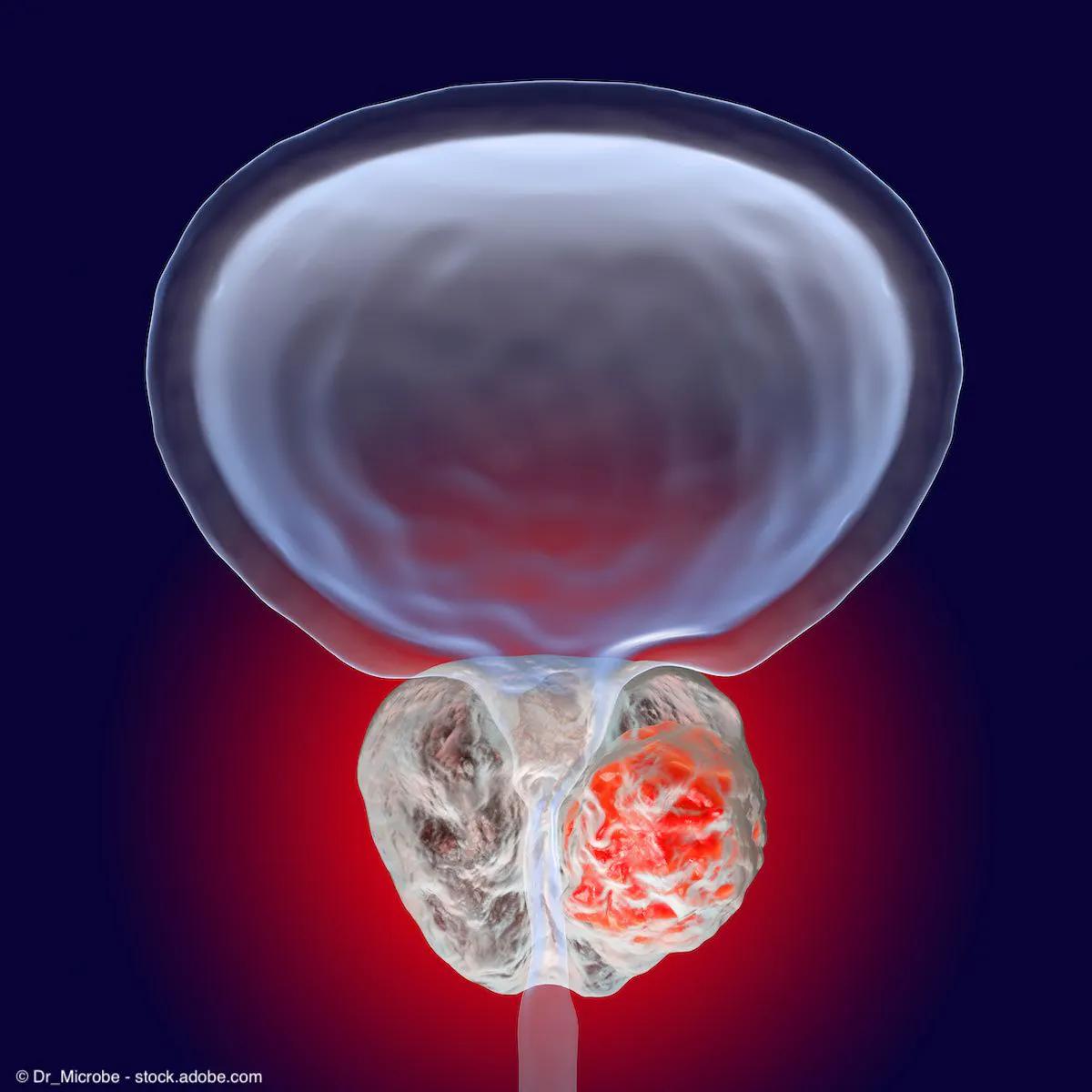212Pb SPECT/CT imaging shows initial benefit, feasibility in mCRPC
“In the future, this imaging technique can help to streamline the drug development process, driving conviction in the agents we bring to larger scale trials," says Stephen Rose, PhD.
Newly published 212Pb SPECT/CT images showed rapid and persistent tumor uptake of 212Pb-ADVC001, a 212Pb-prostate-specific membrane antigen (PSMA)–based targeted alpha therapy, in the first patient with metastatic castration-resistant prostate cancer (mCRPC) administered with the agent.1
Imaging at 20 hours further demonstrated persistent tumor uptake despite low counts due to 212Pb decay.

The images from the first patient were published the Journal of Nuclear Medicine1 and represent the first-in-human 212Pb SPECT/CT images published to date, according to the authors.
“The ability to acquire imaging of an alpha-emitter with a standard SPECT camera and standard collimator within a convenient acquisition time for the patient could provide more precision in how we treat patients with prostate cancer, and patients with other cancers, in the future. Confirming the presence of the drug in the target is important because it serves as a quality assurance and can be used to derive an understanding of the biodistribution and pharmacokinetics of the drug,” said Stephen Rose, PhD, head of Translational Medicine and Clinical Science at AdvanCell, in a news release on the findings.2
The first patient imaged was a 73-year-old male with mCRPC who received 60 MBq of 212Pb-ADVC001 as part of the TheraPb clinical trial (NCT05720130). SPECT/CT imaging was done at 1.5, 5, 20, and 28 hours after infusion.
Overall, the representative 212Pb SPECT/CT images showed rapid tumor uptake of 212Pb-ADVC001 in concordance with the tumor burden shown on the pretreatment 18F-DCFPyl PET/CT images. Imaging at 20 hours further demonstrated persistent tumor uptake despite low counts due to 212Pb decay (10.6 h half-life).
Rose added,2 “What’s more, access to PET imaging is a bottleneck, in the United States and globally. SPECT cameras are more widely available and may address this critical issue, as SPECT imaging can be used for patient selection, therapy decision-making, and guiding adaptive dosing strategies based on changes of target expression and tumor volume during treatment.”
In total, the phase 1/2 TheraPb trial plans to enroll 18 patients with PSMA-positive mCRPC. The study will include 4 cohorts of patients who will receive 212Pb-ADVC001 via intravenous injection at the escalating dose levels of 60, 90, 120, and 150 MBq. Each patient will receive up to 4 cycles of therapy every 6 weeks.
Patients are eligible for the study if they have received prior treatment with androgen receptor pathway inhibitors and chemotherapy (or have declined chemotherapy) and have not received prior treatment with [177Lu]Lu-PSMA radioligand therapy.
The primary outcome measures for the study include adverse events and serious adverse events, dose-limiting toxicities, and clinically significant changes from baseline in clinical chemistry and hematology laboratory values. The study also aims to determine the maximum tolerated dose and a recommended dose level for phase 2 of the study. Secondary outcome measures include the whole body biodistribution and organ radiation of 212Pb-ADVC001, radiographic progression-free survival, objective response rate, and prostate-specific antigen response.3
Rose concluded in the news release,2 “In the future, this imaging technique can help to streamline the drug development process, driving conviction in the agents we bring to larger scale trials. In addition, the ability to image 212Pb with a standard SPECT camera in a relatively short timeframe means that 212Pb is a true theranostic alpha-emitter and could be a valuable in selecting patients for targeted alpha-therapies.”
References
1. Griffiths MR, Pattison DA, Latter M, et al. First-in-human 212Pb-PSMA–targeted α-therapy SPECT/CT imaging in a patient with metastatic castration-resistant prostate cancer. J Nucl Med. 2024 Apr 1;65(4):664. doi:10.2967/jnumed.123.267189
2. New SPECT/CT technique shows impressive biomarker identification, offers increased access for prostate cancer patients. News release. Society of Nuclear Medicine & Molecular Imaging. April 16, 2024. Accessed April 17, 2024. https://www.snmmi.org/NewsPublications/NewsDetail.aspx?ItemNumber=46563
3. Dose escalation and efficacy study of 212Pb-ADVC001 in patients with metastatic castration resistant prostate cancer. ClinicalTrials.gov. Last updated November 3, 2023. Accessed April 17, 2024. https://clinicaltrials.gov/study/NCT05720130
Dr. Schuster highlights the FDA approval of imaging agent flotufolastat F 18 in prostate cancer
June 22nd 2023"We're excited that the FDA approval of this radiotracer gives us yet more tools at our disposal to diagnose prostate cancer in all its forms, from early to late in the disease process," says David M. Schuster, MD, FACR.
